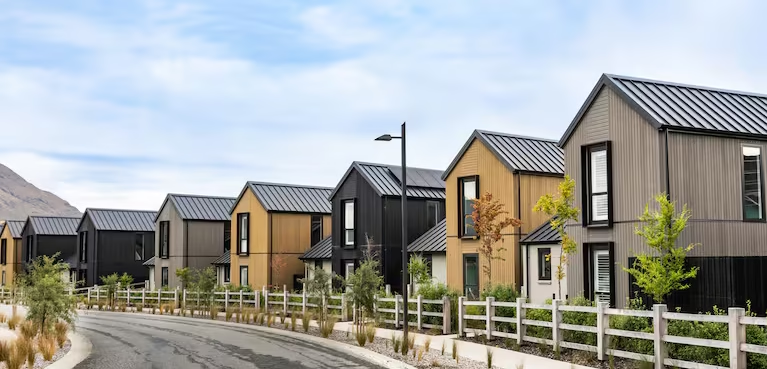Overview of Dwelling Trends in New Zealand
The 2023 data on total dwellings in New Zealand has been explained in this dashboard with a significant upward trend in housing development across the country. The statistics are further distributed into regional council areas with key insights explained. As of 2023, New Zealand’s total dwellings stood at 2,056,578, depicting a positive growth of 9.05% (170,061dwellings) compared to the preceding census year (2018). This increase is likely attributed to a combination of factors such as robust housing developments and population growth.
Region-wise Analysis: Key Insights
The data set is further broken down by regional council areas, demonstrating changes compared to 2018. Some key insights include:
Auckland Region:
- Leading the way with 611,895 dwellings, Auckland witnessed an 11.9% increase, with (64,836 dwellings), driven by swift urban development.
Canterbury Region:
- The second-largest region with 25,881 dwellings and 10.1% growth.
Waikato and Northland Regions:
- Both regions experienced relatively moderate growth with 216,222 dwellings with 9.0% growth in Waikato and 88,092 dwellings with 8.8% growth in Northland, indicating steady housing development in suburban areas.
Regions with Prominent Growth:
- The Tasman Region (11.0%) and Marlborough Region (9.2%) illustrate a good percentage growth compared to other regions. This change is likely due to new housing developments, a surge in economic activity, or simply the rise in the migrant population in less crowded areas.
Regions with Slower Growth:
- Some regions, such as the Southland (4.6%) and Gisborne (4.4%), have shown a slower growth trend.
- This could be due to multiple factors, such as geographic limitations, economic factors, and slower population growth.
- Understanding these disparities could help identify the future prospects for providing regional housing and infrastructure development.
Data Visualizations: Map and Bar Charts:
- These visualizations specify an interactive view of dwelling distribution, highlighting regions with higher concentrations of development.
- The bar charts further display a precise number of dwellings, percentages, and number changes between the 2018 and 2023 census periods allowing for an easy comparison.
This regional breakdown provides a comprehensive understanding of New Zealand’s housing growth from 2018 to 2023. Understanding these trends can inform decisions related to housing development, infrastructure planning, and economic investments at the regional level. For a detailed analysis, read here.




